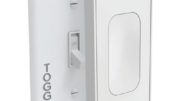Smart home technology came into our lives a few years ago and landed with a big bang. Thanks to inexpensive devices from Amazon and Google, as well as Apple’s then-innovative Siri technology, we could suddenly automate our homes in ways we never thought possible. Voice control could be applied to anything, and all of a sudden we could control practically anything in the house just by swapping out outlets.
A lot of folks rushed to add smart technology to our lives, and then something odd happened. It’s as if we all learned, as a country, that we really didn’t want to use our voice to control everything. Along the way we learned that Alexa recorded and kept every stupid question we asked and used that information to try to sell us stuff. Of course they did. But whether it was one of those reasons or something else, the smart home revolution seems to have stalled.
Where does smart home go from here?
The answer, ironically, is that it goes outside the home. The same technology that enables smart homes is used in NFC communication systems for cars. There are several car brands that let you use your phone as a key, and Tesla has done away with traditional keys altogether. This is the same technology as smart home stuff, just enabled so that it only works at very close range. Some cars will let you control them over cellular, although that’s a much smaller number.
The latest innovation is smart trackers. As much as Apple would like you to believe this is new, companies like Tile have done this sort of thing for years. We even sold a solution like this at Solid Signal about seven years ago. As usual, though, Apple improved and repackaged the technology so much that it’s really experiencing a lot of growth now.
The barriers to tracker technology
Apple’s AirTags and other smart trackers are good, but they still suffer because they are fairly expensive. If you’re really going to implement something like this, it has to be so cheap that you don’t even notice it. I’m talking about something like $1 or less net cost to the customer. At a price like that you could buy a couple dozen of these things and put them on everything from your socks to the family pet (which might also be named Socks.) That’s really where this needs to go.
Latest trends in connection technology
Most smart home devices connect over Wi-Fi or Bluetooth. The latest generation of trackers use Bluetooth, because of its easy connectivity and extreme power efficiency. After being announced in 2017, 802.11ah is a Wi-Fi standard that may finally be going somewhere. It’s a low-power, low-frequency Wi-Fi standard that will deliver performance over a much larger area than traditional Wi-Fi. While it’s quite a bit slower, it’s perfect for smart home devices. The only problem with 802.11ah is that it may be the answer to a question that no one asked. Bluetooth is already covering the market for things that move, while traditional Wi-Fi is covering the market for things that don’t. That doesn’t leave a lot of room for something else.
Will any of this be enough to revive interest in smart home tech?
That’s the real question. I tend to think the “excitement” period for smart home is over. On the other hand, we’ve all started to find real uses for smart home tech. We’re making sure our doors are locked, checking who’s walking on our property, and feeling confident that the refrigerator is full. We’re putting voice control on light bulbs when we know we can’t get up to turn them on, and for the most part the trend of asking Alexa embarrassing things is over. Now it’s time for smart home to just settle in, and work.





